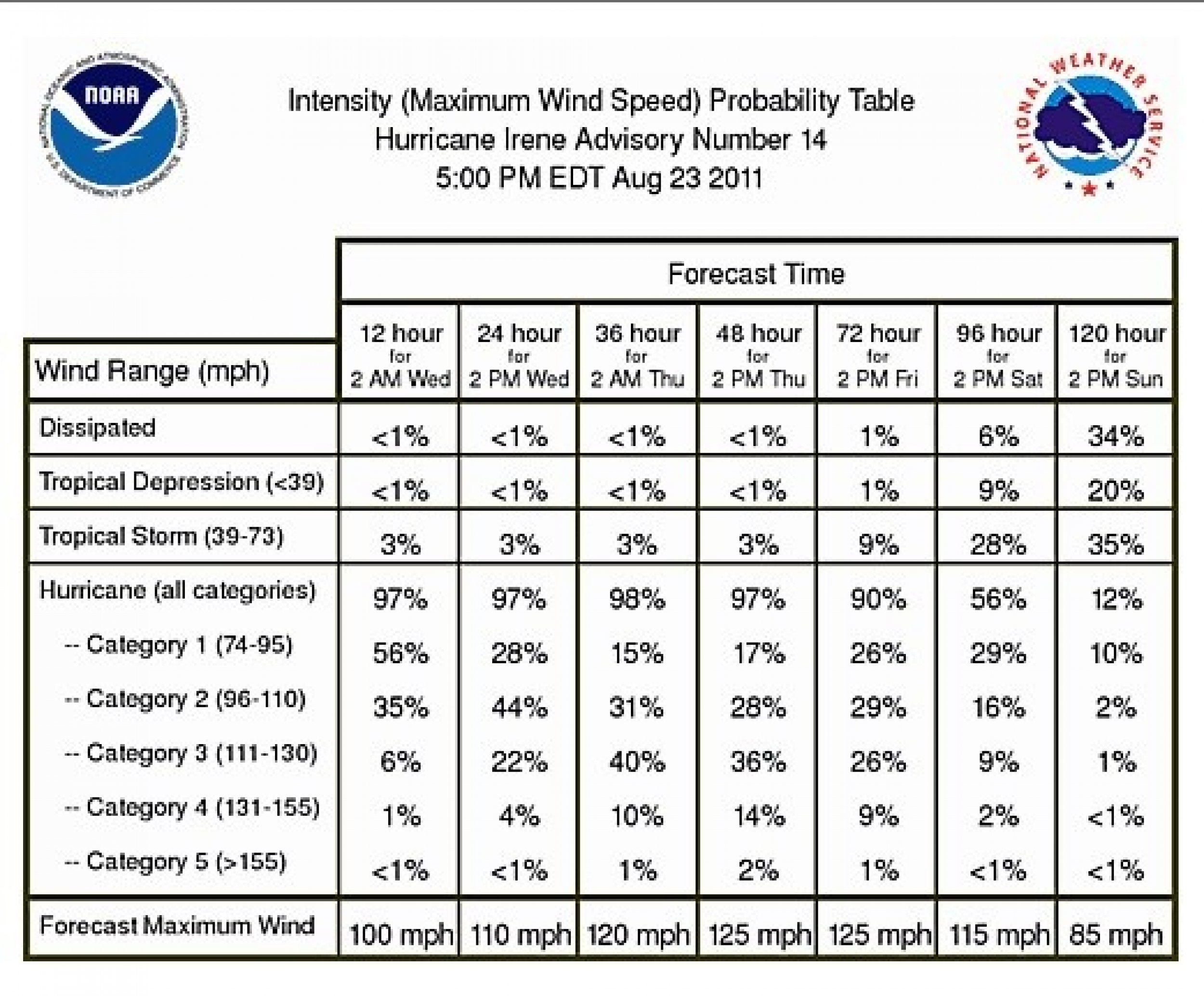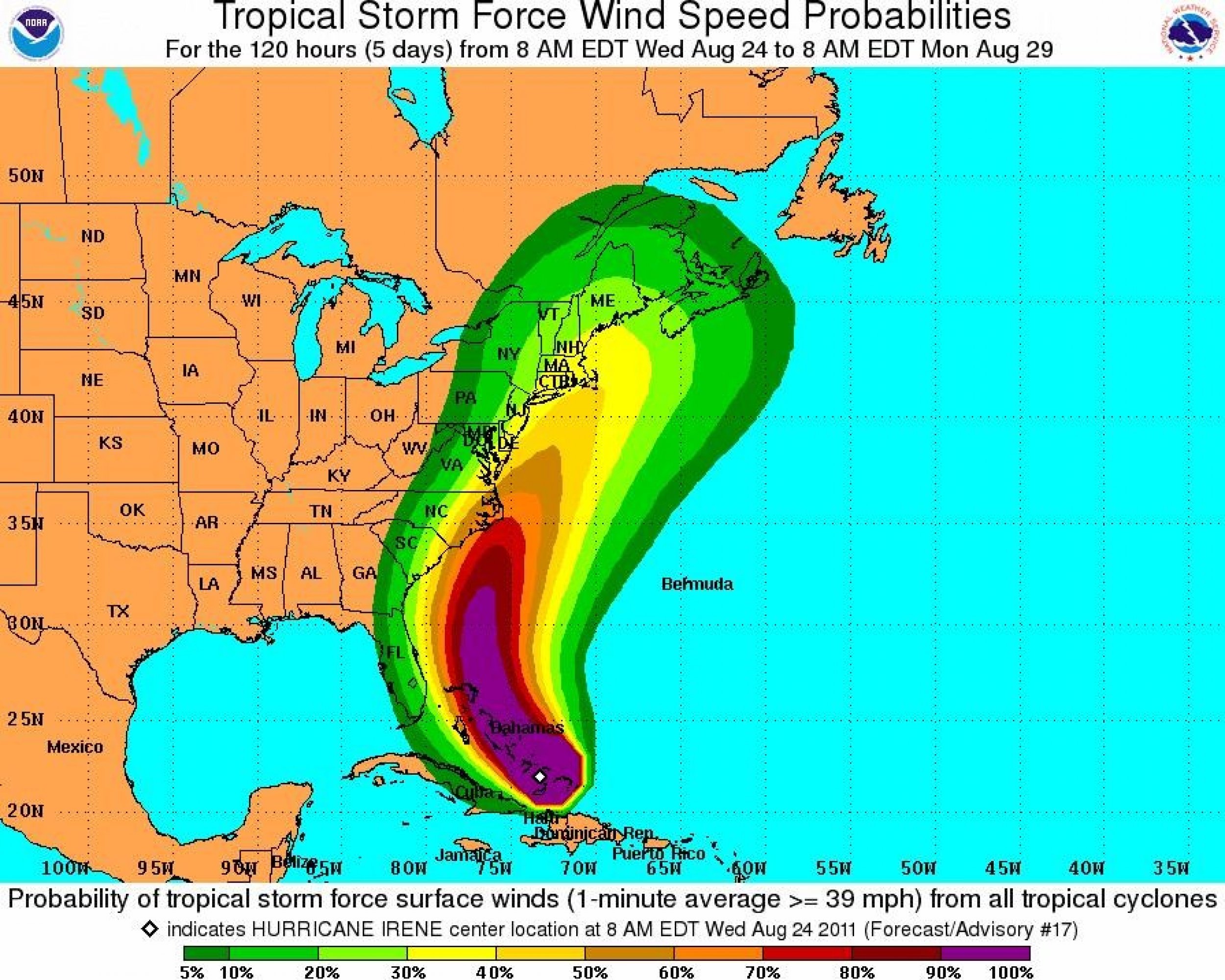Hurricane Irene 2011: Officials Urge Entire Eastern Seaboard to Prepare [MAPS]
National Hurricane Center forecasters put Hurricane Irene on a path straight up the East Coast rolling up from North Carolina, through New York, and up into Massachusetts and Maine.
The storm, now at a Category 3 level, grew in strength Wednesday afternoon as wind speeds continued to climb, making Irene capable of devastating damage, according to the Saffir-Simpson Hurricane Wind Scale. The storm battered the Bahamas Wednesday morning, with wind speeds up to 120 mph.
Forecasters at the National Hurricane Center predict Irene will strengthen throughout the day Wednesday and could become a Category 4 storm by Thursday. Officials up and down the East Coast prepared for what could be the first major storm to hit the U.S. in three years.
Craig Fugate, administrator of the Federal Emergency Management Agency, said Tuesday that the entire East Coast should be on alert.
As of 2:00 p.m. EDT, the storm center was located 65 miles southeast of Long Island Bahamas, or about 250 miles southeast of Nassau, moving northwest at 12 mph.
Hurricane-force winds extend outward up to 50 miles from the storm center with tropical-storm-force winds extending up to 205 miles.
A hurricane warning remains in effect for all of the Bahamas, while a tropical storm warning is in effect for the Turks and Caicos Islands.
The National Hurricane Center urged interests in eastern North Carolina and the Mid-Atlantic States to monitor the progress of Irene, as thousands of people in Ocracoke Island, N.C., were ordered to evacuate.
The storm got very well organized as she passed farther away from the big island of Hispaniola, said Bill Read, who heads the National Oceanic and Atmospheric Administration's National Hurricane Center in Miami, during a briefing on Wednesday.
The effects of the hurricane in the form of tropical-storm, maybe even hurricane-force winds, rain, beach erosion, and tidal surge will be in play from the mid-Atlantic all the way up through New England as the storm progresses, he added.
According to the latest computer forecast models there are three most likely outcomes.
1.) Irene takes a more interior track, passing near Raleigh, N.C., Richmond, Va., Washington D.C., Baltimore, Md., Philadelphia and New York City. This is by far the worst-case scenario.
2.) Irene skirts the Outer Banks as a monster storm and makes landfall anywhere from the Jersey Shore to New England. Most agree this is the most likely scenario. In this case, Long Island, New York would be the most likely landfall location.
3.) Irene revs up and continues to shift eastward, missing the coast entirely like Hurricane Earl did last year. Unfortunately, this is unlikely. Unlike last year, there is a strong westward shift of the persistent steering pattern known as the Bermuda high that's more likely to push storms westward toward land.
READ ALSO: Hurricane Irene: What were the Worst Hurricanes to Hit New England?
Have a look at the maps from the National Hurricane Center's latest advisory:







© Copyright IBTimes 2024. All rights reserved.












